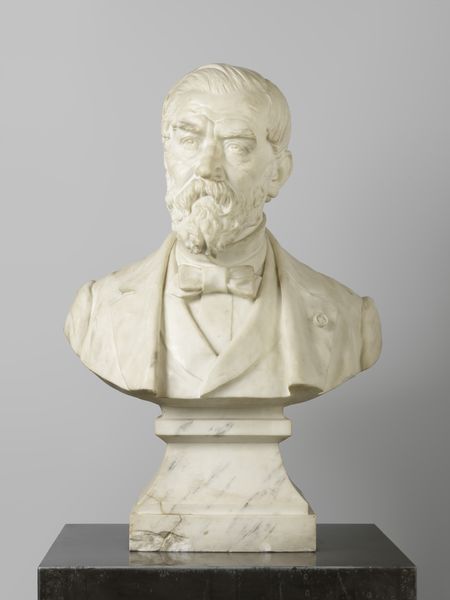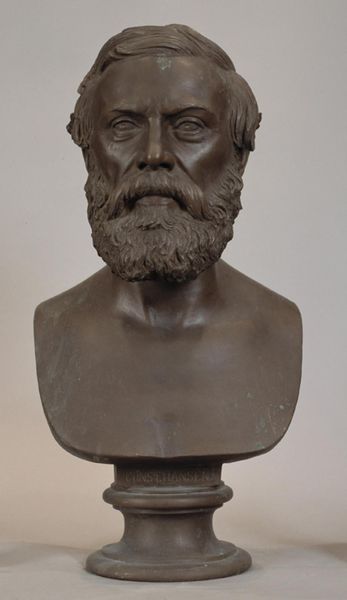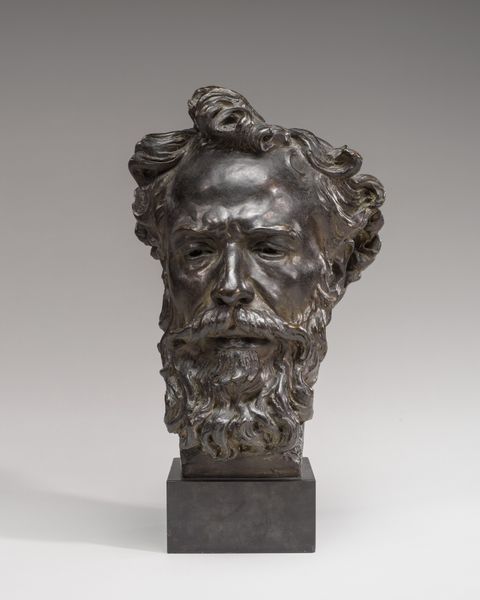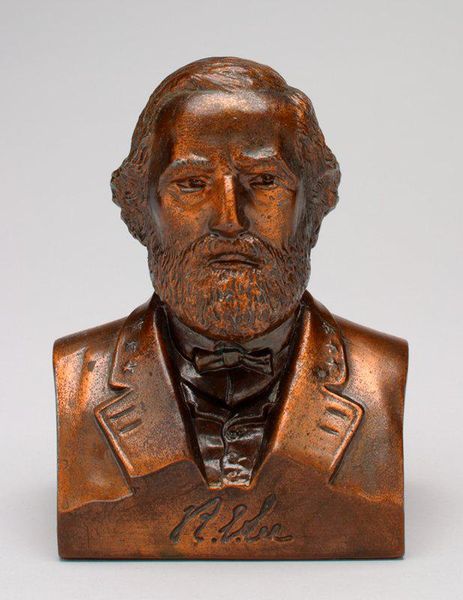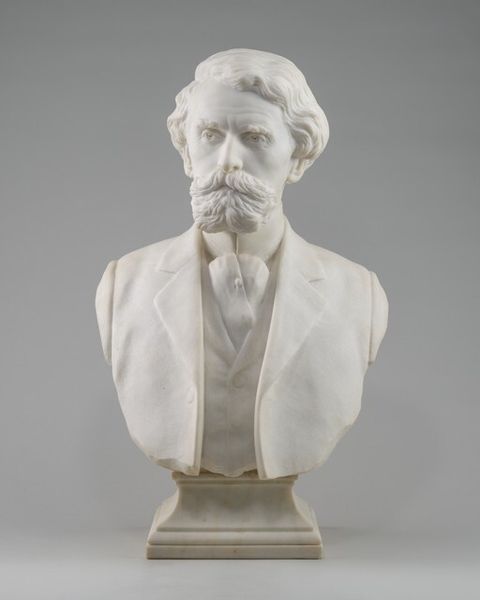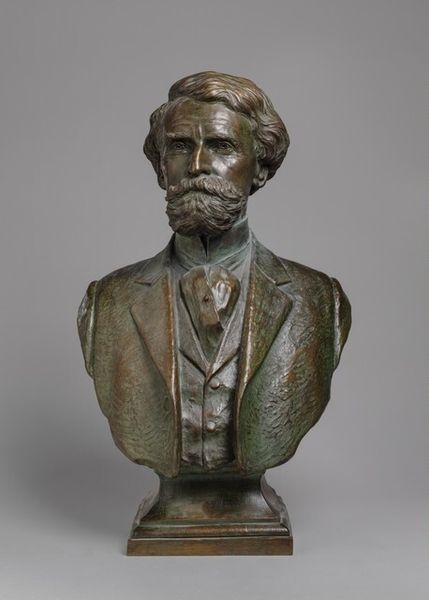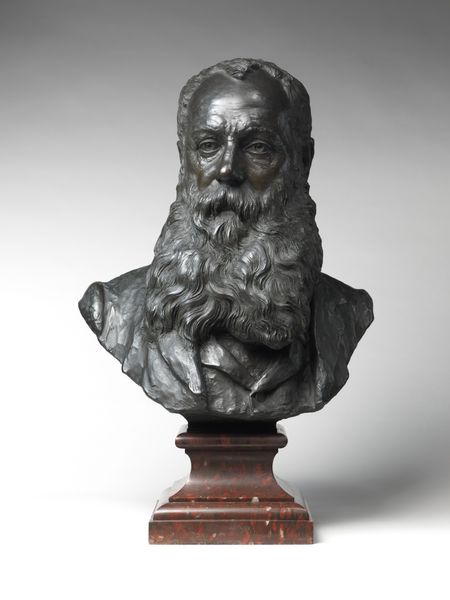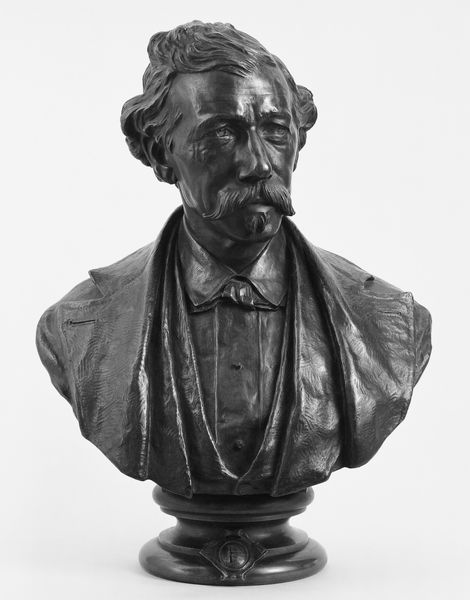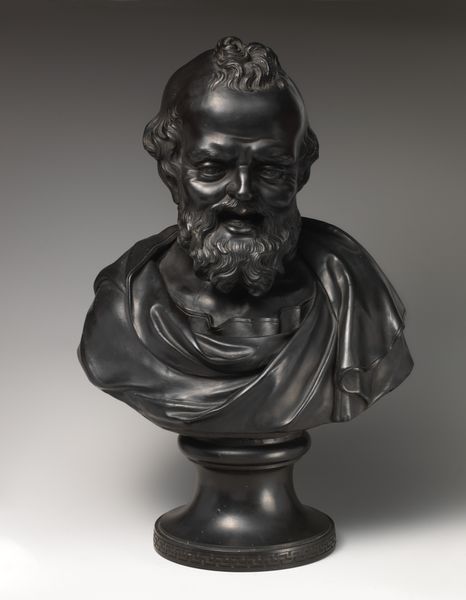
bronze, sculpture
#
portrait
#
sculpture
#
bronze
#
sculpture
#
academic-art
#
realism
Dimensions: 35.9 × 26.7 × 12.7 cm (14 1/8 × 10 1/2 × 5 in.)
Copyright: Public Domain
Editor: Here we have Jonathan Scott Hartley’s bronze sculpture of George Inness from 1891. It’s surprisingly detailed; you can almost feel the texture of Inness's beard. What can you tell me about it? Curator: Consider the bronze itself. Its patination, the artificial aging process, wasn’t merely decorative. It reflects anxieties about value and authenticity prevalent at the time. Was it about honoring Inness or making a saleable object? The choice of bronze—durable yet relatively affordable compared to marble—speaks to the rising bourgeois market for art. What kind of labor was required? What were the foundry conditions? Editor: I hadn’t thought about it like that. I guess I was focused on Inness himself, a painter immortalized in bronze. Curator: The choice of portraiture, particularly bust form, implies a specific consumer. Were these displayed in domestic spaces or public institutions? And think about the social dynamic. Hartley, the sculptor, commemorating Inness, the painter, both participants in a specific art world. Did they have shared patrons? Editor: So, it’s not just about the artistic genius of either man, but about the network and the market forces surrounding them? The production of the bust is as significant as who it represents. Curator: Precisely. It urges us to question the narratives we attach to artists. How does the material object shape our perception of genius and legacy? The sculpture prompts investigation into artistic labor, economic forces, and how they affect our understanding of art. Editor: That's fascinating. I’ll definitely look at sculpture differently from now on.
Comments
No comments
Be the first to comment and join the conversation on the ultimate creative platform.

